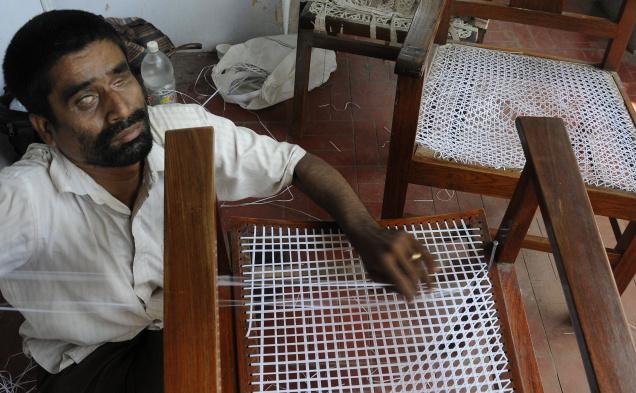
Chairs with wire seats, which were once seen in every household, are used only in a few offices now
Until a decade ago, weavers who deftly stretched and twisted cane fibre with nimble fingers to make a chair seat in a few hours, were a common sight. But, not anymore.
The art of making such seats is slowly dying out as people prefer to purchase new chairs instead of getting them repaired. This has forced many weavers to look to other professions. An example is 36-year-old visually challenged K. Nandakumar, who now sells books and plastic utensils on trains to support his family.
The services of weavers like him are in demand only in a few government offices where cane chairs are still in use. “Earlier, I used to be called to households too. Today, I get to work only at places such as the Egmore Court and Chennai Metropolitan Water Supply and Sewerage Board offices,” he says.
Such furniture was very popular in the 1970s. “People now prefer metal and wood as they are easy to maintain. But, cane and wire seats are comfortable and do not generate heat,” he says.
Nandakumar did a one-year course in chair weaving in Uttar Pradesh in 1997. “It takes nearly five hours to weave a chair and I get Rs. 250 to Rs. 300 for a seat. It is difficult to work on more than two seats per day,” he explains.
R. Sekar, head clerk at Egmore Court, who has called Nandakumar to repair chairs for the complex, says weavers are rarely seen these days. “It is especially hard to find someone who does it with finesse,” he adds.
source: http://www.thehindu.com / The Hindu / Home> News> Cities> Chennai / by Vivek Narayan / Chennai – November 05th, 2014